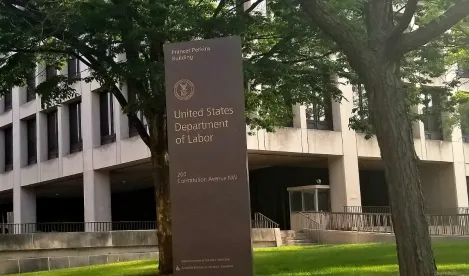On January 7, 2021, the U.S. Department of Labor (“DOL”) announced its final rule (the “Final Rule”) setting the standard to determine whether an individual is an employee or an independent contractor under the Fair Labor Standards Act (“FLSA”). The employee versus independent contractor debate has garnered significant attention over the years as more workers desire the flexibility that comes with contractor status. While the Final Rule – the DOL’s first codification of the independent contractor test – offers businesses, workers, regulators, and courts predictable guidance, it is unlikely to remain in its current form since it does not take effect until over one month after President-elect Biden takes office. Nonetheless, employers and businesses should understand the import of the Final Rule and continue to monitor federal and state law developments on this important topic.
The Final Rule
As we previously reported, the Final Rule reaffirms the use of the “economic reality” test, which considers whether workers are in business for themselves (weighing in favor of independent contractor status) or are economically dependent on a potential employer for work (weighing in favor of employee status). The Final Rule uses two “core factors” and three “guidepost” factors to evaluate the degree of worker independence. The two “core factors” are:
-
The nature and degree of the worker’s control over the work; and
-
The worker’s opportunity for profit or loss based on initiative and/or investment.
Under the Final Rule, these two factors are afforded greater weight. If both factors point towards the same classification, whether as an employee or independent contractor, there is a substantial likelihood that the individual will be classified as such. The Final Rule also identifies three other factors that may serve as “guideposts” in the analysis, particularly when the two “core factors” do not point to the same classification. These factors are:
-
The amount of skill required for the work;
-
The degree of permanence of the working relationship between the worker and the potential employer; and
-
Whether the work is part of an integrated unit of production.
While these “guidepost” factors provide additional clarification for situations where the “core factors” do not provide a clear classification, the Final Rule explains that these are not the only factors that may be relevant to making a final determination. In addition, the Final Rule reminds employers and workers that the reality of the working relationship, rather than the terms of a written contract or informal understanding, is more relevant in determining whether a worker is an employee or independent contractor.
Employer Takeaways and Implications
Since President-elect Biden’s administration explicitly identified the DOL’s Final Rule as one it would likely “freeze” when he takes office, there is little chance the Final Rule will take effect as written on March 8, 2021. The question is whether the Final Rule will be modified or eliminated entirely. If the Final Rule does take effect on March 8, 2021, it would provide businesses and workers more clarity and predictability in determining whether workers should be classified as employees or independent contractors. To the extent the Biden administration blocks the Final Rule entirely, it may simply return to the broader standard in place during the Obama administration, allowing an employer-employee relationship to be established even when “indirect control” existed over the worker.
Regardless of what occurs, employers should continue to take steps to ensure proper classification of their workers and remember that the ultimate inquiry in determining whether a worker is an employee or an independent contractor comes down to who has the right to control or direct the results of the work, rather than how the parties define the relationship. We will continue to monitor the Final Rule and provide updates as more information becomes available. Should you have any questions concerning these issues, employers should also consult counsel for assistance.




 />i
/>i

